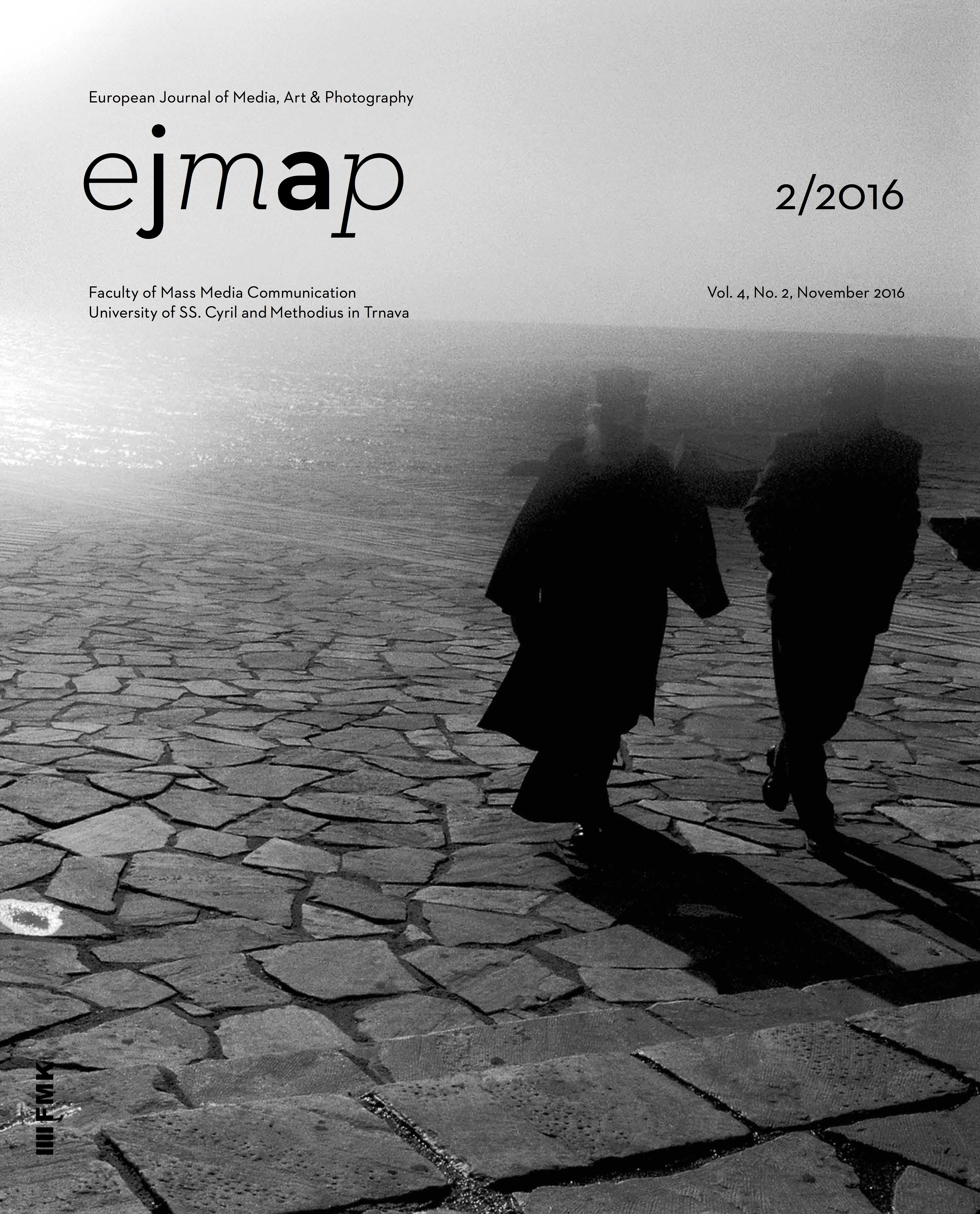
We kindly inform you that, as long as the subject affiliation of our 300.000+ articles is in progress, you might get unsufficient or no results on your third level or second level search. In this case, please broaden your search criteria.

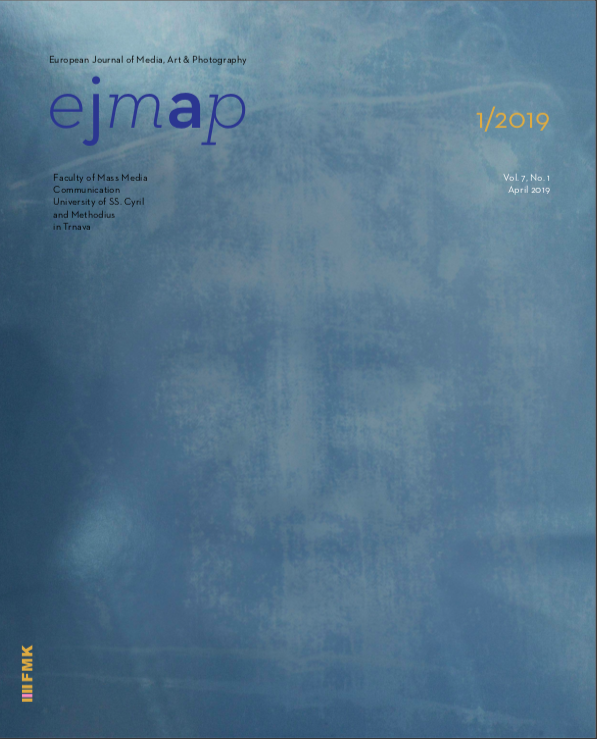
The interview focuses on opinions of the photographer, lecturer, and Assistant Professor Jozef Sedlák. Last year, on the occasion of his 60th birthday, the photographer organized a recapitulatory author exhibition. The interview discusses the photographer’s creative concepts, his approach to photography as a medium, and it also comprises the function of photography in society. One of the topics he deals with from a long-term perspective is social documentary. However, the photographer deals in parallel with staged figurative photography, later on with the conceptual pictures. Each of his documentary photographs captures an event that articulates anonymous personae connected by momentary chance and situations. The author presents his authorial philosophy and stances to work with the medium of analogue photography. The practical experience and theoretical philosophy of Jozef Sedlák reflect his opinion and ideas regarding theoretical questions, such as the sense of family tradition, allusive warnings on evaluation and societal ladder, the need for lively humanistic tradition, decoding of developing and current tendencies in art, questioning the autonomy of photography, relationship patterns of artists and theoreticians, the necessity of critical thinking development among students and the continuity of an artist’s and creator’s life. The given interview declares the author ́s strong concept of creativity and provides an evaluating perspective of an influential figure in Slovak photography. The interview focuses on the author’s less presented productions. The same as with his other outputs, they have a certain mysterious depth and timelessness. This part of his production may reveal the personality of Jozef Sedlák, as a photographer in a broader context. It will be definitely interesting to have a look together with the author beneath the surface of the medium of photography, but especially, I dare to say, beneath the surface and thus into the depth of the author ́s intentions as a photographer, educationalist and last but not least a truly faithful person.
More...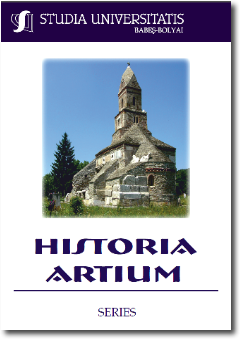
Coriolan Petranu – Referee of the Historical Monuments Commission and His Expert Art Reports Written in Romania during the Interwar Period. Scattered Letters. The present study is a welcome and useful completion of the chapter published by the author in the volume entitled Istoria Artei la Universitatea din Cluj [Art History at the University in Cluj] (Nicolae Sabău, Corina Simion, Vlad Țoca. Coordinator Nicolae Sabău). The article focuses on previously unpublished letters on the topic. The teaching activity of Professor Coriolan Petranu, founder of the Art History Department at the University in Cluj, was beneficially completed after 1920 by his contributions in the field of historical monuments protection in Inter-War Romania and his expert reports in the field of fine arts and of the restructuring of the museums in Transylvania according to the modern principles of European museums. Among his numerous expert reports, the documents/letters under analysis record his observations, actual art historical studies, on projects related to town planning, architecture, public monuments, street furniture and technical works, urban systematization plans etc. (the building sites, liturgical furniture and wall paintings of the Orthodox church in Târgu Mureș and of the Orthodox cathedral in Cluj, the fresco of the festive hall of the Academic College in Cluj painted by master Costin Petrescu, 1938-39), the analysis of certain folk art objects from museums and collections in Transylvania, public and institutional monuments (Avram Iancu’s statue in Cluj, the Union Monument in Arad, Pârvan’s bust from the University in Cluj etc.), expert reports on Romanian vernacular monuments, wooden churches (Poiana, Tălgi, Honțișor, Bocșa Română, Roșiori etc.) and masonry churches (Criscior), his correspondence with artists of the Inter-War Period and the exhibitions he organized (Catul Bogdan, Emil Cornea, Atanase Damian, Aurel Ciupe, Aurel Papp etc., the exhibition Collegium Artisticum Transylvanicorum, Cluj, 1921), his expert reports on works of painting, sculpture, graphic arts and European bookmaking. The correspondence of the art historian from Cluj with intellectuals, professors, art historians, museum directors and library directors of upper and general education institutions from Great Romania, from Bessarabia and Bucovina, was impressive (Petre Constantinescu, Oreste Tafrali, Vasile Ciurea, Al. P. Arbore). He also made generous donations of books and photographic materials to these institutions.
More...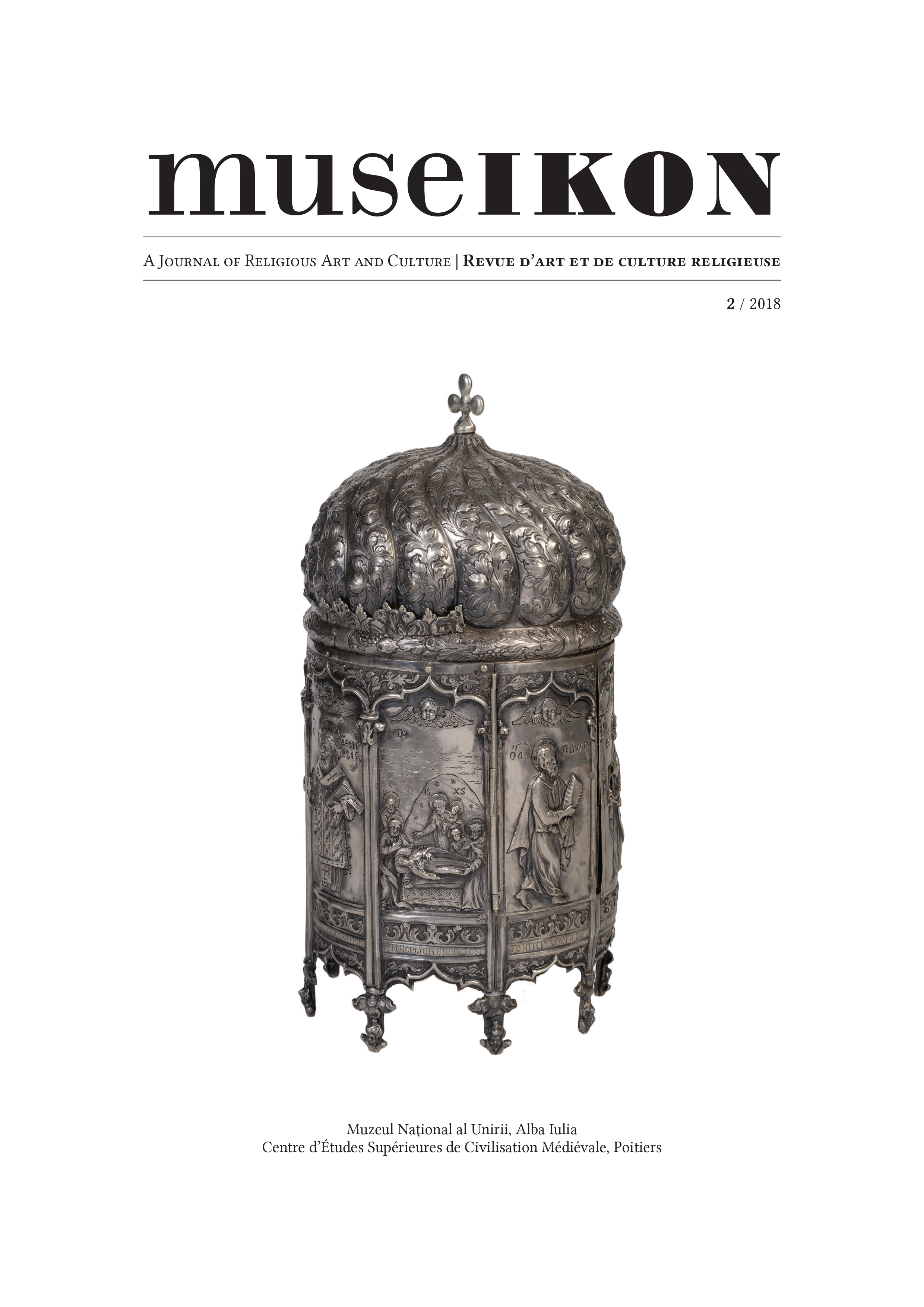
Viewed from outside, a human life – our lives – resemble a horizontal line stretching from the moment of birth to the grave. The actual reality of our lives, however, unfolds in a vertical plan of height and depth, or more precisely, on both plans simultaneously. That is, to say:“in the reality of the cross”
More...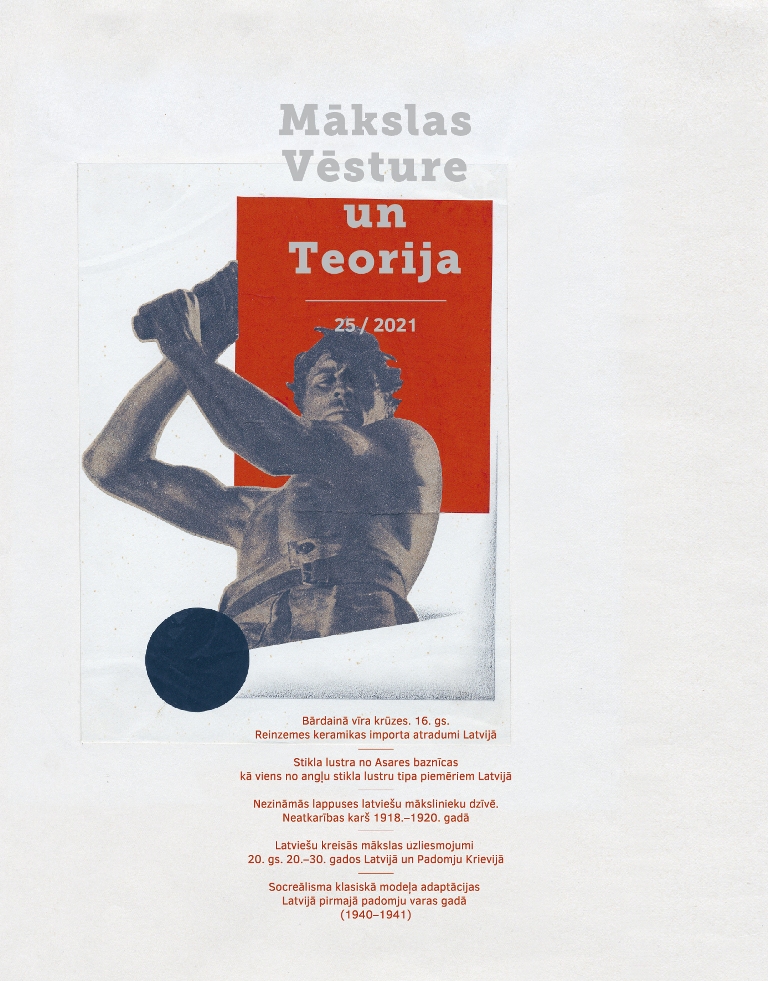
The so-called Bartmann jug is one of the typical forms of the German stoneware tableware produced in the pottery workshops situated near the River Rhine, especially in the Cologne region, in the post-medieval period. The characteristic decoration on the neck of these jugs is a large and expressive bearded man’s mask. Bartmann jugs – just like other items of German stoneware – were widely exported to the Baltic Sea region. Some dozens of Bartmann jugs’ fragments have been found in Latvia during archaeological excavations in the second half of the 20th century. Using Latvian finds, this paper briefly describes the transformation of the bearded mask and the development of other decorative applications on these jugs during the 16th century. Foreign parallels have allowed us to determine the approximate date and place of production of the Latvian finds. Current research suggests that fragments of Bartmann jugs were mostly excavated in Riga Old Town. They are stored in the Riga History and Navigation Museum (published in: Reinfelde 2012). There are also several archaeological finds from the cultural layers of some castles situated near the Gauja River. Smaller stoneware jug fragments decorated with four bearded masks were excavated in Turaida castle, which belonged to the Archbishop of Riga till the mid-16th century. They are stored in the Turaida Museum Reserve (published in: Ose 2019). A large collection of ceramics was found during excavations at Cēsis castle, the residence of the Master of the Livonian Order in the first half of the 16th century. It includes large fragments of four Bartmann jugs with applications of bearded men’s faces and several smaller sherds with friezes and medallions that decorated the body of these stoneware jugs. It is possible that Bartmann jugs have also been in Āraiši castle, situated not far from Cēsis, but only small sherds with probable décor of the body were found there, not the bearded masks. Remains of the Bartmann jugs have also been found in two castles near the lower reaches of the Daugava River – in the excavations of the Ikšķile and Salaspils castle ruins. The archaeological ceramic collections from Cēsis, Āraiši, Ikšķile and Salaspils are stored in the Latvian National History Museum and have yet to be published. Fragments of Bartmann jugs were not found in the archaeological ceramic collections of Bauska, Sēlpils, Alūksne and other castles. It is not clear whether these jugs may not have been used there or may not have been found due to the relatively smaller volume of excavation areas.
More...
The book review analyses the monograph "Jēkabs Strazdiņš" (Riga: Neputns, 2020) by art historian Jānis Kalnačs who has gathered all available data about the noted Latvian figural painter and art collector of the inter-war period.
More...
The book review deals with the monograph "Sarmīte Māliņa" (Riga: Neputns, 2020) by Tomass Pārups. Māliņa is the only woman in the first generation of Latvian installation artists and known for her subtle synthesis of Suprematist, Minimalist and ready-made traditions.
More...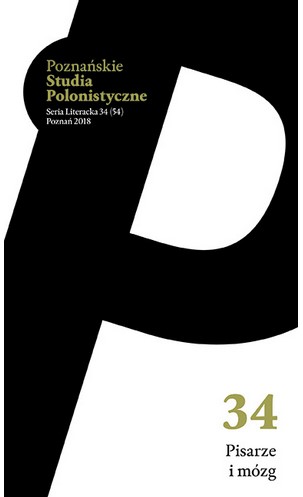
The Author is interested in the states of becoming silent, discontinuing one’s utterance, which are associated with certain mechanisms of the functioning of the brain, as well as in the observation of such states in different artistic disciplines. Looking for an answer to the question how aposiopesis operates in words, sounds, and images, she analyzes pieces of music, poems (Zbigniew Herbert’s Pora), and examples of visual arts (Wojciech Pakmur’s paintings of the tango). In her reconstruction of the research field, the Author refers to rhetoric ( Jerzy Ziomek, Seweryna Wysłouch), the philosophy of language (Michel Foucault, Jean-François Lyotard), and neurophenomenology. The aim of the article is to suggest a new mode of reading that seeks inspiration and language in works from the field of neuropsychology (Maria Pąchalska), hermeneutic phenomenology (Mark Johnson), or neurology (António Damásio, Oliver Sacks). The Author’s analyses refer to Raoul Schrott and Arthur Jacobs’s concept (Gehirn und Gedicht, 2011), and the conclusions confirm that one should not look for a model (pattern) in the reception of art, but describe mental processes.
More...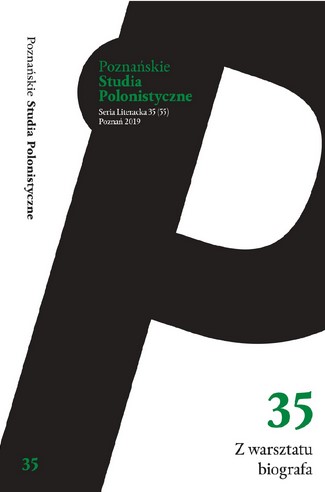
The article is devoted to the biography of Justine Frank (1900-1943), a marginalized member of the surrealist movement, a painter and writer who combined Judaism with pornography, a critic of the Zionist project who tragically died in Palestine. Written by an Israeli artist and an expert on the interwar avant-garde, Roee Rosen, it is not only an artistic provocation – a part of a larger experiment in the field of the so-called parafiction also including editions of Frank’s novel Sweet Sweat and exhibitions of her paintings – but also an interesting statement in the discussion on the possibilities and limitations of feminist criticism, as it points out the problem of fabrication of the indispensable precursors.
More...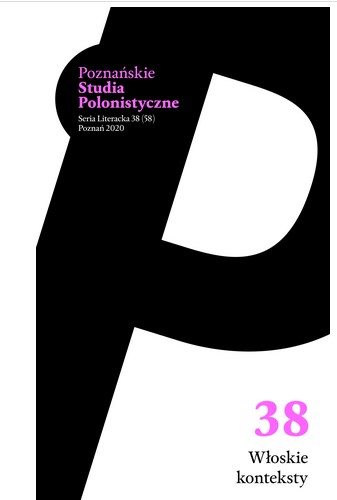
The article is the first attempt at a holistic view of Stanisław Vincenz’s relationship with Italian culture. Since his youth, Vincenz would visit the Italian Peninsula travelling to Venice and, already as an emigrant after World War II, made a few visits to Naples and Tuscany. These journeys resulted in numerous comments included in his essays on Dante Alighieri, as separate overview Z perspektywy podróży (From a traveller’s perspective) and List z Neapolu. Dialog z Czesławem Miłoszem (A letter from Naples. A dialogue with Czesław Miłosz). Italian journeys, interest in Dante and Italian culture (architecture, painting, folk rituals) brought numerous Italian motifs in the tetralogy Na wysokiej połoninie (On a high mountain pasture). The key element is included in volume II, Zwada (Conflict), which describes a group of loggers cutting down trees in a primeval Carpathian forest. In this part, a young Italian dies and is buried after a Hutsul funeral ritual which is not understood by the foreigners. The analysis of the abovementioned motifs shows how important Italian culture was to Vincenz, also in a very personal sense, given the Vincenz family’s distant Venetian roots. One may even claim that for the writer, Italy was almost a family land. Personifying the European spirit, Italy was his “broader” homeland.
More...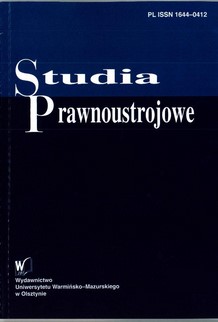
This article presents a phenomenon that everyone we pass every day, but not everyone sees it immediately. Going to work or school, shopping or walking next to each other, almost every day we pass the drawings and inscriptions which someone painted on the facades of buildings, or even on the means of communication. This direct contact with the graffiti was an inspiration to discuss the phenomenon from the perspective of selected aspects of criminal law. The main objective, which was accompanied by the formation of the article, was to determine the boundary between legal and illegal graffiti. Bearing in mind that graffiti is a specific form of artistic activities, the detailed analysis of the circumstances indicating that the graffiti goes beyond the boundaries of art and begins to be the result of vandalism. Drawing or writing in public space also served to discuss the specifics of halved acts. In addition, the article explains how to prevent and fighting against the phenomenon of graffiti, which were undertaken on a national scale, as well as global.
More...
In this article I analyze the chosen examples of fan comics. In the first part of the article I describe the history of comics, how and by whom they were created. Then I show the comic’s role as part of Transmedia Storytelling. In the second part I introduce the term fan fiction and I describe the circumstances of the creation of this specific form of fan art. Moreover I write about the most important fan fiction theories. In the last part of the article I analyze 3 selected authors of comics who publish their works on social media platform Deviant Art. Also I describe their style, inspirations and references to original works. Fan comics are a very specific phenomenon. However the many possibilities given by this art is not used by the fans. There are no experiments with a form contrary to the fan fiction literature. On the other hand the selected comics are an exception. Maybe the authors are not very innovative. But the interesting thing is that they use humor and autobiographical themes in an unusual way.
More...
The article discusses the issue of changes introduced into reprints of pre-1955 American comics in order to adapt them to requirements of the Comic Code. Pre-1955 American comic books are characterized as “rebellious” — challenging norms and aesthetic rules of contemporary America – and the activities of Comic Code Administration as a form of their pacification. What follow next is a presentation of main strategies of adaptation of pre-1955 comics to the requirements of the Comic Code identified on the basis of analysis of fifty reprints. In the last part the author compares the original and reprinted versions of three comics books stories, shows how dramatically the plot of stories could change due to introduction of prescriptions of the Comic Code Administration.
More...
In the presented article, the authors introduce the meaning of comics as a cultural, educational and social medium. The aim of the conducted research was to check how students of pedagogy perceive the movies in the aspect of its educational values. Particular attention has been paid to the interpretive skills of the protagonists 'and anti- heroes' behavior patterns.
More...
The comic adaptation of Richard Krafft-Ebing's Psychopathia sexualis adds nothing to the original, but the change of medium to comic from text to text-enriched series of images distributes accents differently. Equal frames, like the pedantic gallery on the cover, build contrast, the second element of which is the chaos prevailing in the lives of ôpervertsö whose fate is drawn by Robert Crumb. Their deeds can entertain or shock in the short run, but the impression that steadily builds up, and thus takes root deeper in the reader, is depression. The medicine turns out to be a character also derived from fantasy, the queen of the jungle, Sheena. Sheena, the heroine of the television series, is not only the imagined companion of young Robert Crumb, but also his phantasm, she combines the role of a sex project with the role of an erotic tutor instructing him in the subject of fantasizing (somewhat like Mrs. de Warens, Rousseau's „mummy” ). Sheena's way of life, her parameters as a fantasy center, sets out paths along which the boy's erotic imagination will take place. In later episodes of the autobiographical comic cycle My Troubles with Women, Crumb will describe his fellow women as Sheena's shadows, fetishizing not only the physical conditions of their partners, but also their openness.
More...
The Comparison between the comic books’ superheroes and gods often appears in the scientific discourse. This phenomenon is linked to the human need for creating new idols. In their comic book titled The Wicked and the Divine, Kieron Gillen and Jamie McKelvie are going one step further and decide to create a whole new pantheon, designed to fit our century. Creators did not design new gods, they used various pantheons and reincarnated them in new, different bodies. In this article, I will be considering the role of divinity and its place in the modern world. In order to achieve this, I will use comparative analysis between the main series of The Wicked and the Divine and two special one-shots — first set in the twenties of the twentieth century, second in the beginning of the nineteenth century — to highlight the differences in the role of gods and divinity in different period of time. The article will also concentrate on the form of the bodies that the gods gain due to the reincarnation, and the impact of this phenomenon on the place that they take in society.
More...
The article presents phenomenon of emergence of Serbian alternative comics scene during the period of breakup of Yugoslavia. The analysis is focused on anthology of works “Regards from Serbia” by Aleksandar Zograf who is considered the founder of the new direction in comic art. The works drawn over the nineties were portraying everyday life in Yugoslavia during its breakup. This period has been considered a strong taboo since and is not being willingly taken up by scientist from former-Yugoslavia what makes it difficult to gain knowledge that would meet scientific standards. Zograf’s comics were being published both in his country and abroad, what made them source of knowledge on situation in the Balkans of the world. In the article comic art is also being treated as anthropological evidence that enables understanding of foreign culture and processes related to attempts of rejection of the old ideological, moral, and axiological order.
More...
Vampire stories in the Far East are the example of memetic art. With the Vampire Figure, Far East adapted a whole range of western mems. In my article I focus on Japanese manga and anime. I choose these media, because they are most specific for Japanese culture. First I discuss the meaning the vampire narration has had and has nowadays in western culture, I analyse both bad vampire Figure and good vampire Figure. When Far East wanted to adapt vampire narration, it encountered the basic problem. The vampire figure in the West represented the Other, who was often associated with an Easter immigrant. That is why the East, adapting the vampire myth, had to develop special strategies: it could be a simple reversal (vampire represents the West), disregard of the ethnic dimension of the Otherness (focus on its sexual, gender and social dimension) or the shift of the border between ourness and otherness, so that the ourness compounds both East and West, and the otherness - the common enemy. I analyse each strategy. At the end I discuss the example of Kurt Wimmer’s Ultraviolet, American film inspired by the manga and anime aesthetics, to prove that the inspirations are reciprocated.
More...
Starting from the modern interpretation of the theories: parler femme by Luce Irigaray (adopting a speaking position that will enable woman/women to articulate their own sexuality, speak with their own voice) and écriture feminine by Hélène Cixous (a text freed by writing a female desire that carries the potential of revolutionary transformations) I come to the theory of the nomadic subject by Rosi Braidotti (the central categories are movement, changeability and the endless process of shaping the subject). I ask questions about the possibilities and limitations of finding or building a female identity and subject through creativity, empowering women in the domain of images related to sexuality, and the right to talk about their desires as creating their own place in the space of culture. As an example of creative acts building subjectivity, I present an erotic comic "Being" which is the first collective work on Polish soil that is supposed to express erotic fantasies from the perspective of women.
More...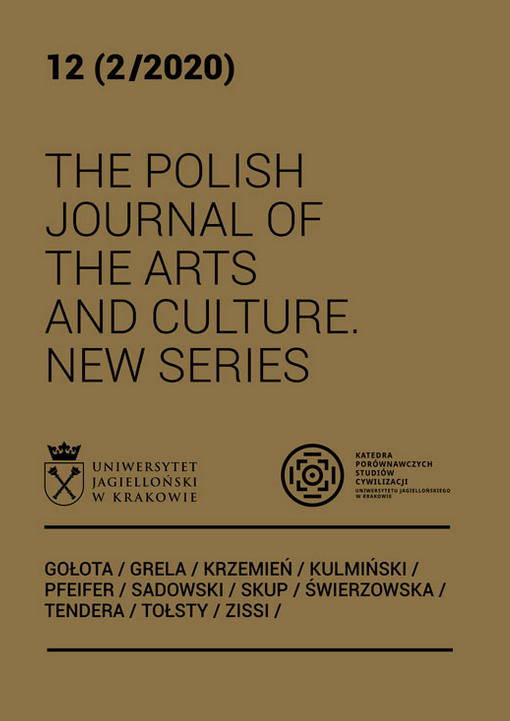
Review of: Wojciech Kosior - Minor Mountain Elohim, Feminine Face of Yahweh and Assyrian Apotropaic Fad. Some Remarks on the Margins of: Izaak J. de Hulster, Joel M. LeMon, Image, Text, Exegesis. Iconographic Interpretation and the Hebrew Bible (London: Bloomsbury T&T Clark, 2015), pp. 336.
More...